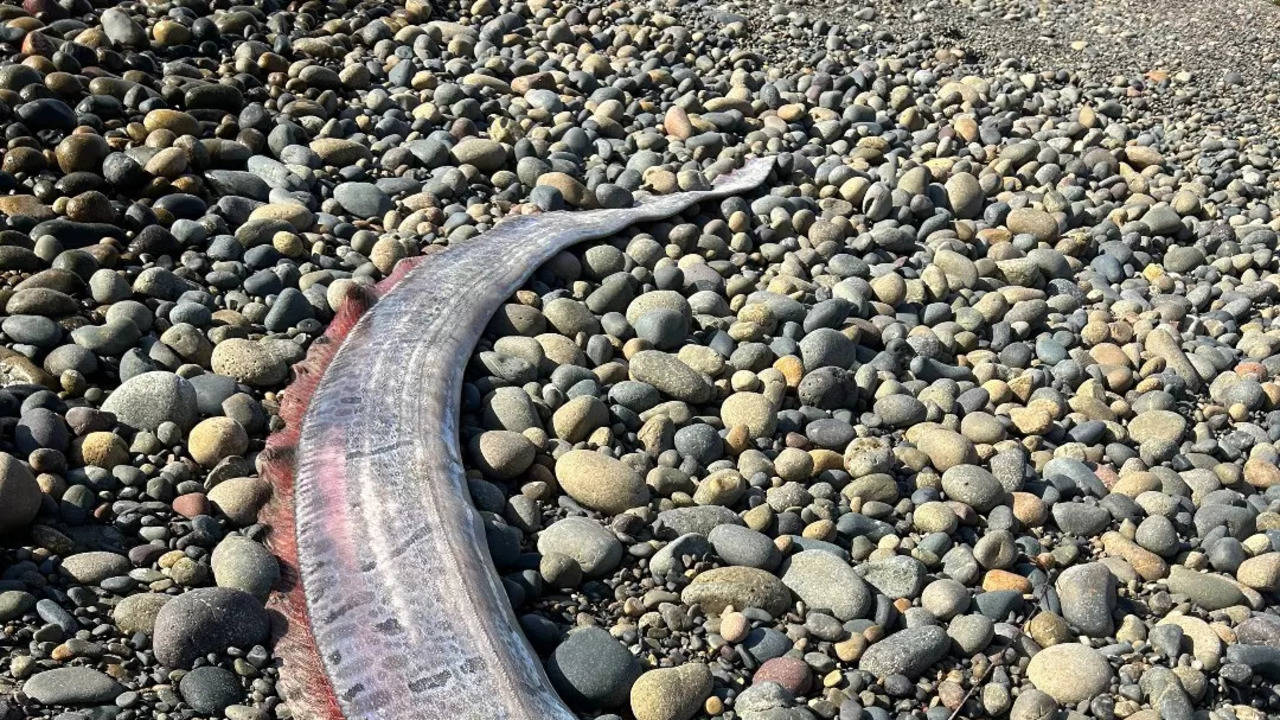Table of Contents

A rare oarfish, often referred to as a "doomsday fish," washed ashore on Grandview Beach in Encinitas, California, marking the second such occurrence in 2024. A doctorate candidate from the Scripps Institution of Oceanography made the discovery of the 9–10 foot deep-sea monster public on social media.
Oarfish: A Mythical Marine Giant
According to the Ocean Conservancy, oarfish, which are distinguished by their long, ribbon-like bodies, may reach a length of 30 feet. Myths that associate them with imminent natural disasters have been fueled in part by their remarkable look. The species usually lives in the mesopelagic zone, which is about 3,280 feet deep and has little sunshine. Their silvery, reflecting bodies aid in their ability to blend in with dimly illuminated waterways.
Researchers from the NOAA Fisheries Service collected this most recent oarfish and brought it to the Southwest Fisheries Science Center. Scientists intend to investigate its genetics, biology, and anatomy, CBS reported.
Rare Sightings in California
The new finding in Encinitas comes after another oarfish stranding occurred in August 2024 near La Jolla. Only 20 oarfish have been observed along the California coast since 1901, according to Scripps Institution of Oceanography, making encounters with these secretive species very rare, according to CBS.
Oarfish typically come to the surface when they are ill, dying, or confused. Changes in the environment, such as climate events and ocean conditions, have been identified by scientists as possible causes of these strandings.
Possible Environmental Triggers
The Scripps Oceanography Marine Vertebrate Collection’s manager, Ben Frable, hypothesized that the recent sightings may be explained by shifting ocean conditions. The fish could have been confused by a recent red tide, Santa Ana winds, and a weak El Niño earlier in the year. Frable highlighted the intricacy of these occurrences, pointing out that several variables may be involved.
Myth Versus Science
For a long time, the “doomsday fish” has been associated with earthquake and other calamity forecasts. Scholars have refuted these beliefs as folklore, nevertheless. According to a 2019 research published in the Bulletin of the Seismological Society of America, there is no connection between earthquakes and oarfish sightings in Japan. Rather, the analysis indicated that media attention was probably influenced by the sightings’ rarity, per CBS’ report.
In a social media post, the Scripps Institution dispelled this myth by stating that there is no scientific proof linking oarfish strandings to seismic activity.

